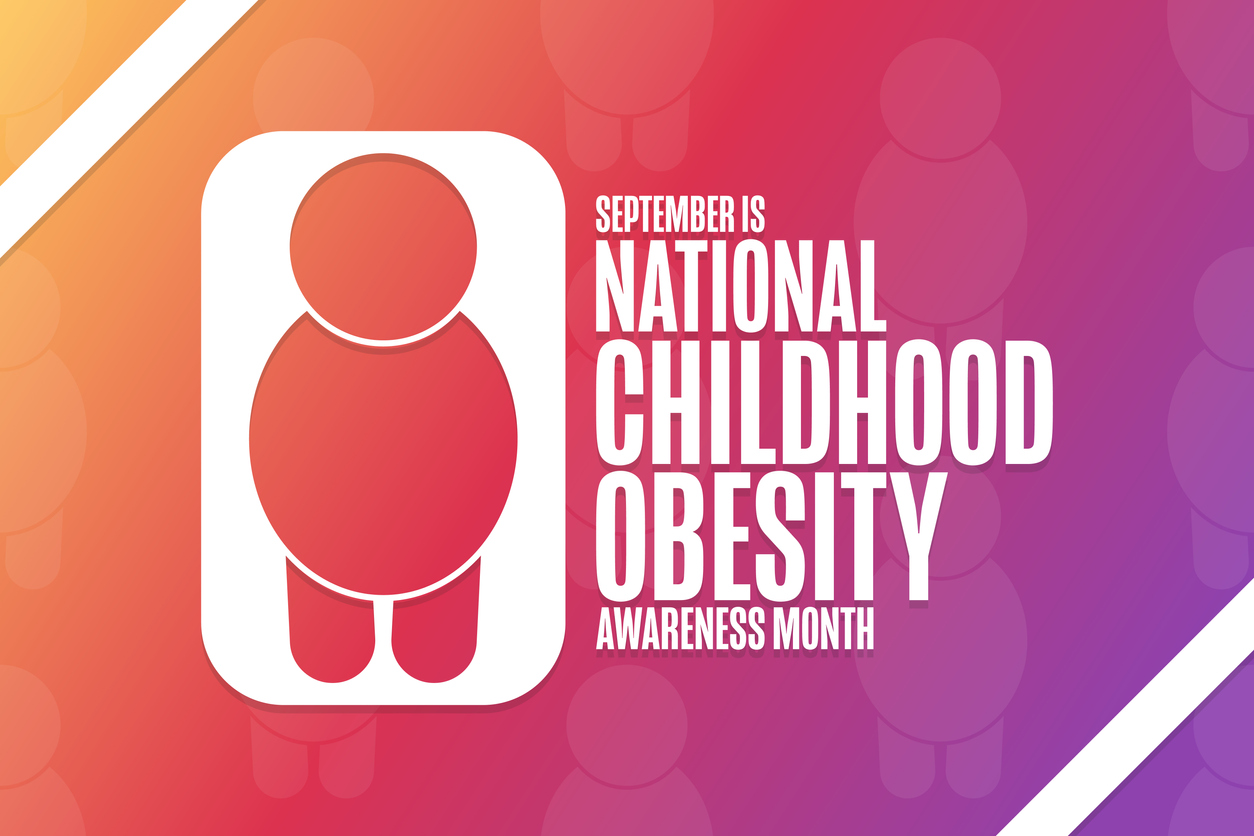Category: Health Insurance
Understanding What Hospice Care Means
July 1, 2024

When treatment for serious illnesses is causing more side effects than benefits, or when health problems become compounded, then a patient and their family members may begin to wonder about hospice. “We recognized as people consider hospice, it’s highly emotional times,” says medical director for Austin Palliative Care Dr. Kate Tindall. “It might include worries and fears.” But one of the things she hears most often from patients and their families is that they wish they had started sooner. Understanding who qualifies for hospice and what it entails is the first part of deciding what might be best for those with terminal conditions.
What is Hospice Care?
Hospice is meant to care for people who have an anticipated life expectancy of 6 months or less, when there is no cure for their ailment, and the focus of their care shifts to the management of their symptoms and their quality of life. With hospice, the patient’s comfort and dignity become the priority, so treatment of the condition ends and treatment of the symptoms, such as pain management, begins. There are no age restrictions placed around hospice care, meaning any child, adolescent, or adult who has been diagnosed with a terminal illness qualifies for hospice care.
An individual does not need to be bedridden or already in their final days of life in order to receive hospice care. Other common misconceptions about hospice care are that it is designed to cure any illness or prolong life. It is also not meant to hasten death or replace any existing care, such as those already provided by a physician.
Determining When it’s Time for Hospice
Establishing care is most beneficial for the patient and their caregivers when it is taken advantage of earlier rather than later. Hospice can be used for months as long as eligibility has been met. Once there is a significant decline in physical or cognitive function, the goal for treatment should become to help that individual live comfortably and forgo anymore physically debilitating treatments that have been unsuccessful in curing or halting the illness.
Both individuals and their loved ones who would benefit from initiating hospice care are often unaware of the services or are uncomfortable asking about them. “It’s a hard conversation to have,” says professor of medicine and palliative care at the Duke University School of Medicine David Casarett. “Many people really want to continue aggressive treatment up until the very end.” While many wait for their providers to suggest it, it should be understood that if eligibility for hospice has been met, an individual and their caregivers can initiate hospice care on their own.
Establishing Hospice Care
In order to qualify for hospice care, a physician must certify that the patient is medically eligible, which means that the individual’s life expectancy is 6 months or less. Typically, the referral to hospice starts with the attending physician’s knowledge of that person’s medical history, while eligibility is then confirmed by the hospice physician. A hospice care team consists of professionals who are trained to treat physical, psychological, and the spiritual needs of the individual, while also providing support to family members and caregivers. Care is person-centered, with the importance being placed on the coordination of care, setting clear treatment goals, and communicating with all involved parties.
Receiving Care at Home
Hospice care is generally provided in the person’s home, whether it’s a personal residence or a care facility, such as a nursing home. “When people are close to the end of their lives, going to the hospital does not make them feel better anymore,” explains professor of medicine at the University of California Dr. Carly Zapata. “Because there’s not necessarily something that we can do to address their underlying illness.” Staying at home allows the individual to be around their personal things and close to their loved ones and pets, which can provide them with comfort during the end of their life.
What Does Hospice Care Include?
Hospice includes periodic visits to the patient and their family or caregivers but is available 24-7 if needed. Medication for symptom relief is administered, any medical equipment needed is provided, and toileting and other supplies such as diapers, wipes, wheelchairs, hospital beds are provided. What may surprise some people is that hospice patients may even receive physical and occupational therapy, speech-language pathology services, and dietary counseling.
If needed, short-term inpatient care may be established for those who cannot achieve adequate pain and symptom relief in their home setting. Short-term respite care may also become available to help family caregivers who are experiencing or are at risk for caregiver burnout. Bereavement care, or grief and loss counseling, is also offered to loved ones who may experience anticipatory grief. Grief counseling is available to family members for up to 13 months after the person’s death.
Paying for Hospice
The first step in finding a hospice agency is to search for ones that serve your county. If there are several options available, then it’s recommended to talk to more than one and see which agency will best fit the patient’s needs. Adequate research should be conducted since not all hospice agencies provide physical and occupational therapy.
Hospice is a medicare benefit that all Medicare enrollees qualify for, but it may also be covered through private insurance and by Medicaid in almost every state. Military families may receive hospice through Tricare, while veterans with the Veterans Health Administration Standard Medical Benefits Package are also eligible for hospice. Hospice agencies will also accept individual self-pay, while there are also non-profit organizations that provide hospice services free of charge.
Discontinuing Hospice Care
Though it is uncommon, if a patient does improve or their condition stabilizes, they may no longer meet medical eligibility for hospice. If this happens, the patient is discharged from the program. Another situation that sometimes arises is when a person elects to try a curative therapy, such as a clinical study for a new medication or procedure. In order to do that, the patient must withdraw from hospice through what is called revocation. Both children and veterans are exempt from being disqualified from hospice care if they choose to also pursue curative treatments. Any person may always re-enroll in hospice care at any time as long as they meet the medical eligibility.
Opting for Palliative Care
Individuals with chronic conditions or life-threatening illnesses may opt for palliative care, which doesn’t require people to stop their treatments. Palliative care is a combination of treatment and comfort care and can be an important bridge to hospice care if patients become eligible. Because transitioning to hospice care can be an emotional choice, palliative care providers often help patients prepare for that. Many people avoid palliative care because they think it is equal to giving up and that death is imminent, but studies show that for many, palliative care allows them to live longer, happier lives. This is due to the benefits of symptom management and spiritual support.
While hospice care can be difficult to accept, it can provide people with the best quality of life possible in their final days, as well as provide their loved ones with valued support. With Insureyouknow.org, you may keep track of all medical and financial records in one easy-to-review place so that you may focus on caring for your loved one, your family, and yourself during this period of their care.
Health and Economic Costs of Dealing with Chronic Illness
September 1, 2023

While the diagnosis of a chronic illness is upsetting enough, the financial ramifications of needing ongoing care often hit the hardest. Medical issues account for two-thirds of all US bankruptcies, making them the number one reason people file; forty percent of people who are diagnosed with cancer are bankrupt within four years of their diagnosis. For those who are chronically ill, healthcare is the number three line item for budgeting, while it’s number 10 for healthy individuals.
The costs of living with a chronic illness is not limited to financial burdens though; a chronic illness can also lead to even more health and interpersonal issues.
A Decline in Mental Well-Being
Health impairments can exacerbate existing mental health conditions, like depression, or cause new issues to arise, such as anxiety. Being diagnosed with an illness that’s incurable or being unsure about whether or not the symptoms will improve is going to cause an immense amount of stress in patients. People who feel ill often may also end up feeling guilty for not being able to fulfill their personal responsibilities and show up fully for their loved ones.These mental and physical chronic conditions can lead to harmful degrees of social isolation and perpetuate a cycle of declining overall health.
When considering the connection between physical and mental health, it has been shown that those who report feeling lonely suffer from higher rates of morbidity, infection, depression, and cognitive decline. Living with a chronic illness doesn’t have to equate to a lonely life though, and may even lead to more meaningful relationships, according to Caroyn Hax, an advice columnist for the Washington Post. In her response to a reader with multiple sclerosis, she stated “Although your illness will deter some potential companions, your ability to plan it into a full, rewarding and well-managed life will attract others — specifically those people who appreciate that circumstances change but character does not.”
An Inability to Work and Losing Health Benefits
Many people suffering from chronic health issues may begin to find it difficult if not impossible to go to work consistently. Many people who deal with chronic health issues––such as Charlene Marshall who is a Pulmonary Fibrosis patient–– find it difficult if not impossible to go to work consistently. “Whether the fatigue I feel is from managing the disease or the disease progression, daily activities become exhausting and hard to manage,” she shares. Unfortunately, many people suffering from a chronic condition may begin to be viewed as unreliable by their supervisors, leading to termination, while others may need to resign as they find it impossible to keep working.
For many, losing their job also means losing their health benefits. Those who can no longer work may become reliant on spousal coverage or public assistance, which is likely why 99 percent of Medicare and 80 percent of Medicaid spending goes toward the treatment of chronic disease. Not only does the inability to work affect individuals and their families, but lower labor force participation rates affect society as a whole and are linked to slower economic growth, a higher dependency ratio, and higher tax rates.
Straining Personal Relationships
The inability to work due to chronic illness can lead to financial strain on an individual’s entire family. Not only may family members need to help pay for care, but they may also need to take time from work to care for their loved ones who are undergoing treatment that makes them ill, need help with daily activities, or have just had a major surgery. Between new bills and extended care, the financial struggles of the chronically ill can spread easily to those who care for them most.
People who have a loved one that is suffering from a chronic health condition may also experience stress, concern, and an overwhelming sense of helplessness. Battling a chronic illness doesn’t always have to come with negative interpersonal effects though. Many people actually find that their relationships are strengthened through their health struggles. Marshall, for instance, shares that she is grateful for a strengthened social circle. “I’m blessed to have a network of great friends who support me despite IPF and who are always willing to listen.”
How We Can All Fight Chronic Disease
By working together, we can help build up the next generation for a healthier life through education about the prevention of many chronic diseases. Eating well, regular exercise, and avoiding substance abuse are all behaviors that may reduce the risk of becoming chronically ill. On a societal level, we can address the underlying determinants of health, including one’s environment, education, and access to healthcare. For instance, since many chronic diseases, including cardiovascular disease, diabetes, and arthritis, are associated with poor diet and obesity, the FDA is currently working to make sure US eating patterns are meeting federal dietary guidelines.
If you or a loved one are struggling through a chronic illness, know that you are not alone. The CDC estimates that 6 in 10 adults living in the US have at least one chronic disease, while 4 in 10 suffer from at least two or more. Insureyouknow.org can help you keep track of medical records, doctor’s appointments, financial planning, and other important documentation regarding your health and finances. Getting organized and keeping a plan are easy ways to get more peace of mind on your life’s journey through a chronic illness.
Advocating for Your Patient Rights as a Person of Color
June 15, 2023

Racial disparity in health care is an ongoing challenge in the United States. While there are several social determinants, such as genetics and health behaviors, that impact the quality of healthcare an individual may receive, implicit bias is just one part of it. According to the CDC racial and ethnic minority groups, especially Black Americans are at a higher risk for stroke, cancer, heart diseases, asthma, and other ailments. Racism, both structural and interpersonal, negatively impacts mental and physical health, causing further inequalities across the social determinants of health. So how will you ensure that you receive quality care as a person of color?
Taking Steps Toward Real Improvement
Changing racial injustice within healthcare starts with educating providers about their biases, but real change can also happen during conversations with loved ones or people speaking up when they witness injustices. When discussing racism in healthcare though, it would be impossible to ignore the correlation between insurance coverage and racism. Since 29% of Black Americans are on Medicaid (compared to 17% of White Americans), policy makers could make Medicaid coverage more meaningful by paying the physicians and hospitals more financial coverage for services rendered under Medicaid. For patients who don’t qualify for Medicaid or are not offered insurance coverage through employment, it’s important they know about discounted plans offered through Healthcare.gov.
How to Receive Proper Care as a Patient
A poor patient-doctor relationship will prevent patients from thriving and being the healthiest possible versions of themselves. If you feel like the doctor doesn’t listen to you or rushes you through your appointment, then it’s time to shop around for a new doctor. Even if it takes going through several doctors before finding one that actually listens and takes their time with you, then this (unfortunately) is the process that’s required in order to receive proper care. A good doctor will explain all possible treatment options to their patients and then work with them to determine which one is best.
Besides changing doctors when you don’t feel heard or are given your due time, it’s important to speak up at your appointment. If you’re concerned about something, no matter how trite or embarrassing it might be, tell your doctor. They cannot make an accurate diagnosis if they don’t know everything that’s going on. After any doctor’s appointment, it’s important that patients request copies of their medical records. Medical records help both patients and other doctors keep track of any changes in your health. Lastly, patients should always follow-up with their doctors for test results instead of waiting to hear back from them.
Whatever you do, don’t let health coverage delay seeking medical attention. In case of an emergency, go to the ER; emergency rooms are required to provide treatment regardless of an individual having insurance or their ability to pay for services. There are also many medical facilities that provide routine care to people who don’t have insurance; these facilities include community health centers, departments of health, urgent care clinics who may offer reduced costs for those without insurance, and pharmacy care clinics.
Health literacy is important. This means being able to find, access, and make informed decision about one’s health. CDC’s Office of Health Equity has a series of short informative videos on these and other topics such as social determinants of health, racism and health, and intersectionality on their website.
Family physician Dr. Kimberley Foster advises that people need to be their own advocates; they should treat their own health concerns in the same way they would handle their child’s, which is often proactive. “At the end of the day it’s your health,” says Dr. Foster. “Don’t let politeness or fear stop you from being your own advocate.”
The number one thing anyone can do in ensuring they receive proper health care is to be their own health advocate. If you feel dismissed by any professional at any time, seek a second opinion elsewhere, and bring your medical records with you. Insureyouknow.org can help people store all of their medical records and history in one place so that managing one’s health becomes less daunting. While racism is difficult to discuss, health problems can be even scarier, but with all of your history stored in one easy-to-access place, getting to the bottom of your health can become a more empowered process.
Turning 18: Planning Ahead
January 30, 2023

Turning 18 is a momentous occasion, accompanied by many new freedoms and opportunities along with increased responsibilities and most notably, the official recognition of an individual as a legal adult in the eyes of the law.
While your child will enjoy the many exciting perks that accompany their newfound adulthood such as staying out without a curfew and gaining the right to vote and make their voice heard they’ll also reap the more exciting benefits like accessing financial accounts in their name that they previously may not have had access to and entering legally-binding contracts. Hence, there is much accountability to be taken and responsibility to operate with as one navigates through these new freedoms.
Sign a Medical Power of Attorney
You will find that upon waking up the night after your child turns 18, that they are no longer under your guardianship on healthcare portals where you could initiate care and treatment on their behalf. Arguably one of the most important measures a parent can take upon the commencement of their child’s adulthood to guarantee their ongoing support and involvement in their lives is a Medical Power of Attorney (MPOA). It grants a select individual the ability to make healthcare decisions on one’s behalf in the event that they’re unable to as a result of injury or illness. Without completing this task ahead of time, parents face the risk of time-consuming guardianship battles in court that could hinder them from making medical decisions for their child (such as in the event of a car accident or incapacitating illness) in a timely manner, leaving the ultimate outcome in the hands of the court.
Durable Power of Attorney
While your child may enjoy the many highly-anticipated freedoms that come with adulthood, they are likely still financially dependent on you as their parents. This includes coverage under a parent’s auto and health insurance. Creating a Durable Power of Attorney (DPOA) allows parents to assist in the management of their child’s finances and enables parents the ability to access bank accounts, sign tax returns, and complete other transactions as well as the ability to act on behalf of the child if they are a different part of the world, are incapacitated, or are otherwise unable to.
HIPAA Waiver
Under the Health Insurance Portability and Accountability Act (HIPAA), an individual’s personal health information is protected. Once a child turns 18, healthcare providers can no longer legally disclose information regarding their patient records or treatment plans to their parents, even if they happen to be on their insurance plan. This can prove an impediment for parents seeking to know the status of their child’s health or make necessary medical decisions for them. Having the necessary medical records and information regarding your child’s health is especially essential in the case a parent needs to exercise their Medical Power of Attorney. A signed HIPAA release form by your child grants parents and guardians the ability to access their medical records and speak with their healthcare providers.
FERPA Waiver
The Family Educational Rights and Privacy Act (FERPA), in a manner similar to HIPAA, protects the privacy of educational records including report cards, test scores, and disciplinary records. When a child turns 18, their educational record becomes their own and cannot be released to their parents without their consent, despite the fact that their parents may be funding their tuition. A FERPA waiver permits parents of adult children to maintain access to these records and continue to be able to request amendments to them as needed.
Insureyouknow.org
Though your child may always remain your child in your eyes, the reality is at 18 they will earn the status of a legal adult, coinciding with the expansion of many of their freedoms, while simultaneously, many will be relinquished from you as the parent. Despite this abrupt shift, it is likely your child will still be largely dependent on you, as such, there are important steps you will want to take to ensure you can best support your child. Planning ahead by filling out the necessary documentation can provide a great sense of relief and guarantee that you can continue to support them. Keep a record of the documents you fill out at insureyouknow.org to easily keep track of them and access them.
Medicare Will Cover Shingles Vaccine in 2023
December 27, 2022

Starting in January 2023, Medicare will cover the cost of the shingles vaccine, Shingrix.
The Centers for Disease Control and Prevention (CDC) recommends adults 50 years and older get two doses of Shingrix two to six months apart to prevent complications from the disease shingles. Shingrix is more than 90 percent effective in preventing illness, according to the CDC. But for many people on Medicare, it had been unaffordable at more than $200 for the shot regimen.
The Inflation Reduction Act of 2022 aims to reduce the cost of some drugs and close this barrier to good healthcare. As of January 2023, all vaccinations covered under Medicare part D that are approved and recommended by the Centers for Medicare and Medicaid and the CDC will be covered without a copay. So, no cost-sharing will be associated with the administration of Shingrix, as well as flu shots; tetanus, diphtheria, and pertussis vaccines; and COVID-19 vaccines.
What is “shingles”?
Shingles is an invasive, painful outbreak of rash or blisters on the skin that can damage your vision or hearing, make you lose hair, and cause long-term nerve pain. It is caused by the varicella-zoster virus—the same virus that erupts in chickenpox. After you have chickenpox, the virus stays in your body. It may not result in problems for many years, but as you get older, the virus may reappear as shingles.
Is shingles contagious?
Shingles is not contagious. But you can catch chickenpox from someone with shingles. If you’ve never had chickenpox or the chickenpox vaccine, try to stay away from anyone who has shingles. If you have shingles, try to stay away from anyone who has not had chickenpox or the chickenpox vaccine, or anyone who might have a weak immune system.
Who is at risk for shingles?
Anyone who has had chickenpox is at risk of getting shingles. More than 99 percent of Americans born before 1980 have had chickenpox, even if they don’t remember it. The risk of contracting shingles increases as you get older; shingles is most common in people over 50. People with weakened immune systems are at higher risk of getting shingles. About one out of every three people in the United States will develop shingles during their lifetime. It is rare, but possible, to get shingles more than once.
What are the symptoms of shingles?
Early signs of shingles include burning or shooting pain and tingling or itching. It is usually on one side of the body or face. The pain can be mild to severe.
One to 14 days later, you will get a rash. It consists of blisters that typically scab over in 7 to 10 days. The rash is usually a single stripe around either the left or the right side of the body. In other cases, the rash occurs on one side of the face. In rare cases (usually among people with weakened immune systems), the rash may be more widespread and look like a chickenpox rash. Some people may also have other symptoms, including fever, headache, chills, and an upset stomach.
What are some complications caused by shingles?
- Postherpetic neuralgia (PHN) is the most common complication of shingles. It causes severe pain in the areas where you had the shingles rash. It usually gets better in a few weeks or months, but some people can have pain from PHN for many years, and it can interfere with daily life.
- Temporary or permanent vision loss can happen if shingles affects your eye.
- Hearing or balance problems are possible if you have shingles within or near your ear. You may also have temporary or permanent weakness in the muscles on that side of your face.
- Very rarely, shingles can also lead to pneumonia, brain inflammation (encephalitis), or death.
How is shingles diagnosed?
Usually, your healthcare provider can diagnose shingles by taking your medical history, looking at your rash, and after scraping off tissue from the rash or swabbing some fluid from the blisters, sending the sample to a lab for testing.
How can shingles be treated?
There is no cure for shingles. Antiviral medicines may help make the attack shorter and less severe. They may also help prevent PHN. Recommended medicines are most effective if you can take them within three days after the rash appears. Pain relievers may also help with the pain. A cool washcloth, calamine lotion, and oatmeal baths may help relieve some of the itching associated with shingles.
InsureYouKnow.org
If you are at risk of getting shingles, contact your healthcare provider or pharmacist to schedule a Shingrix shot early in 2023, even if you are not covered by Medicare. Shingrix is also covered by most health insurance plans so check with your insurance provider to see if the vaccine is included in your plan.
At insureyouknow.org, record the date of your first shot and set a reminder for your second shot two to six months later. You’ll be off to a great start in preventing the pain and possible side effects of shingles in 2023.
Drug Shortages Amid the “Tripledemic”
December 14, 2022

‘Tis the season to be jolly, but your cheerfulness may be challenged by drug shortages across parts of the country, with the “tripledemic”—cases of flu, respiratory syncytial virus (RSV), and COVID-19—driving high demand for medications. These seasonal respiratory illnesses have emerged earlier than usual and have spread quickly and simultaneously across the country.
Healthcare Concerns
Record levels of illnesses have caused a spike in the demand for amoxicillin, resulting in an acute shortage of the antibiotic, which is widely used for the treatment of bacterial widespread upper and lower respiratory infections.
Physicians are facing shortages of critical drugs used during surgery. Shortages of key anesthesia medications used for most procedures and surgeries, and critical pain medications such as fentanyl are forcing doctors to use alternatives that may not be first-line or the optimal treatment for conditions or scenarios, or in the best interests of patients.
FDA and Pharma Companies’ Responses
According to the Federal Drug Administration (FDA), 123 of 184 listed drugs are currently in shortage. Officials say one of the reasons for the shortages is that drugs are manufactured based on orders from the previous year, meaning pharmaceutical companies don’t keep an inventory on hand year after year. Some manufacturers report that this year’s orders didn’t anticipate the heavy season for respiratory illnesses.
The FDA is working closely with numerous manufacturers and others in the supply chain to understand, mitigate, and prevent or reduce the impact of intermittent or reduced availability of certain products, including several over-the-counter (OTC) medicines used for symptomatic relief, such as the children’s medications liquid acetaminophen and ibuprofen. The FDA also has taken steps to help relieve the shortage by putting out guidance to pharmacists to make liquid amoxicillin for children from pill versions. (Amoxicillin pills for adults are not in short supply.)
Drug Manufacturing Problems
Drug manufacturers are having problems keeping up with their needs, including manufacturing and quality problems, delays, and discontinuations. Additional factors causing drug shortages are difficulties in acquiring raw materials, manufacturing problems, regulatory issues, business decisions, and disturbances within the supply chain.
Patients’ Actions
Throughout the country, shortages of certain medications and over-the-counter (OTC) pain relievers are leaving people on the hunt for a pharmacy or a grocery store to fill prescriptions and OTC products. Tamiflu, Adderall, and as already mentioned, even the standard antibiotic amoxicillin in liquid form, is getting hard to find.
If you can’t find a recommended medication readily available, you may need to call multiple pharmacies, look for a generic version, ask your doctor for an alternative prescription, or ask your pharmacist how to use an adult version of a medication for a child.
Brigid Groves, a pharmacist and the senior director for practice and professional affairs at the American Pharmacists Association, says, “The most important thing families can do for a sick loved one is to get them tested. Most doctor’s offices and some pharmacy clinics can do rapid tests to help determine whether your symptoms are coming from a viral or bacterial illness.”
InsureYouKnow.org
If you face challenges finding medications during the tripledemic, persevere in your hunt to fill a prescription or to find a substitute recommended by your healthcare professional. Document your health insurance and flexible spending account activities, lists of prescribed and OTC medications, where you found them, and when you’ll need to find and fill them again at insureyouknow.org
Kick Your Health Benefits into High Gear
December 1, 2022

As open enrollment season kicks into high gear, millions of people will have an opportunity to choose their 2023 health benefits.
Employers’ Healthcare Costs
Employers’ healthcare costs are rising, with large companies forecasting up to an 8 percent increase for 2023. The main difference with previous years will be higher prescription drug costs, which will jump 10 percent, the highest in the past decade.
Many companies will try to limit the share they pass along to their workers, as benefits are seen as a key attraction and retention tool in a tight job market.
Employees’ Healthcare Costs
For 2022, annual family premiums for employer-sponsored health insurance averaged $22,463, up slightly from $22,221 in 2021, according to the 2022 benchmark KFF Employer Health Benefits Survey. On average, workers contributed $6,106 toward the cost of family premiums, with employers paying the rest. The average premium for single coverage was $7,911 (up from $7,739 in 2021), with employees paying $1,327 annually, according to the survey. Nine percent of covered workers, including 21 percent of covered workers at small firms, are in a plan with a worker contribution of $12,000 or more for family coverage.
While premium data for 2023 generally won’t be available until after the new year begins, workers may see larger increases than in recent years.
Triple-Tax Advantaged HSAs
Some tools can help you manage your healthcare costs. More than three-quarters of large employers offer Health Savings Accounts (HSAs) that offer triple tax advantages: money contributed is pre-tax, it grows on a tax-free basis, and then can be withdrawn tax-free to pay for qualifying medical expenses now or in the future, all the way through retirement.
You can contribute to an HSA only if you’re enrolled in a qualifying high-deductible health plan. Average annual premiums for workers enrolled in HSA plans are lower than the overall average, but workers shoulder higher costs until they meet their deductible.
Employees can contribute up to $3,850 to their HSA for individual coverage for 2023, up from $3,650 this year; for family coverage, workers can contribute up to $7,750, up from $7,300 this year, per an announcement by the Internal Revenue Service. Catch-up contributions for those 55 and over remain $1,000.
Many HSAs give account holders the option to invest a portion of their money in the stock market. But fewer than 10 percent do so, as opposed to leaving their money just sitting in cash. If you can afford to pay your medical bills through your regular cash flow, your HSA funds will likely grow over time in the market and can be used in retirement to pay for a range of qualifying medical expenses.
HSAs are portable and remain with the owner through plan and job changes. If you are no longer enrolled in a qualifying high-deductible health plan, you can no longer contribute to your account, but you can still tap it to pay qualifying medical costs. Flexible-spending accounts (FSAs), by contrast, are linked to a particular employer; unlike HSA funds, money in an FSA must be spent down or forfeited within a certain period.
Health Insurance Plans under the Affordable Care Act
Outside of the employer market, open enrollment began on November 1 on Healthcare.gov for individual and family health insurance plans under the Affordable Care Act. In most states, open enrollment ends on January 15, although you must enroll by December 15 if you want coverage to begin on January 1. The Inflation Reduction Act extended the enhanced premium subsidies for ACA enrollees through 2025; for many, that may offset the moderate average increases expected to premiums.
Impact of Rising Drug Costs
There are two main reasons drug costs are rising: First, pharmaceutical companies are introducing better, but more expensive drugs for several important conditions. In most years, total drug cost would be tempered by other brand name drugs that were being replaced by generics, but in 2023, there will be fewer of these than usual.
Second, pharmaceutical companies are raising the prices they charge to private health insurance plans because they anticipate having to lower the prices they charge to Medicare. The recent Inflation Reduction Act allows Medicare to negotiate drug prices for the first time. Currently, only 10 drugs are on the negotiation list, but these are widely used. The list will rise to 20 drugs in the future.
The “No Surprises” Act
The “No Surprises” Act that went into effect in January 2022 is having its intended effect of lowering surprise out-of-network charges to patients who get emergency care, non-emergency care from out-of-network providers at in-network facilities, and air ambulance services from out-of-network providers.
InsureYouKnow.org
After you determine your healthcare insurance coverage for 2023, file your decisions at insureyouknow.org. Keep aware of government mandates that can affect your healthcare expenses for prescription drugs, out-of-network charges, changes in Medicare, increases in premiums, and your HSA and FSA contributions and withdrawals.
Take a Vacation = Take Care of Yourself
September 27, 2022

You work hard but do you also take time to relax, seek adventure, and recharge your mind and body? There are some major benefits to taking a vacation although many employees come up with excuses not to use all their vacation time each year.
Memo to Employees: Taking a Vacation Has Benefits
After you come up with a bounty of excuses for not taking a vacation—you feel guilty about being away from your office, you may think a vacation would be too expensive, or you are saving excess time for an unexpected event—you may be able to overcome these obstacles when you realize a vacation can provide the following benefits.
- Improves mental health. A recent study reports that after taking a vacation, travelers feel less anxious, happier, and well-rested.
- Prevents heart disease. By taking time off, you can lower your stress levels caused by working, which can, in turn, prevent your risk for heart disease or heart attacks.
- Brings happiness before, during, and after a trip. Planning a vacation helps you visualize the happiness your vacation will bring that will be experienced during your trip and as fond memories after you return to work.
- Increases productivity and creativity. When your brain is exposed to new experiences including languages, sights, sounds, and cultures, you feel revitalized, and your creativity is boosted. If you take regular time to relax, you’ll be less likely to experience burnout.
- Strengthens relationships. Traveling and exploring with other travelers—friends, family, or even a tour group– can add some fun and closeness to your relationships.
Memo to Employers: Encouraging your workers to take a vacation has benefits
If you are an employer, encourage your workers to take time off. Both you and your team deserve a break and the freedom to schedule vacations. To encourage your employees to take vacations, pay attention to these tips from Business News Daily:
- Acknowledge your employees’ need for vacation time.
- Build a process through which team members can cover for colleagues taking time off.
- Regularly remind employees of deadlines to submit holiday vacation requests.
- Show interest in your employees’ vacation plans.
- Clearly explain your time-off policies in your employee handbook.
- Promote a healthy work-life balance as part of your company culture.
- Lead by example and take vacations.
InsureYouKnow.org
Whether you rely on colorful printed brochures or flashy online resources, start planning a well-deserved vacation now! When you decide on an international, stateside, or local adventure, check on any medical precautions, prescriptions you may need to have at the ready for the duration of your trip, and health and travel insurance policies. Then, record all your travel arrangements for your getaway at insureyouknow.org.
Do You Realize How “Precious” a Child Is?
September 15, 2022

The cost of raising a child through high school has risen to $310,605 because of inflation that is running close to a four-decade high, according to an estimate by the Brookings Institution, a nonprofit public policy organization based in Washington, DC.
In 2017—years before the pandemic and during an extended period of very low inflation—the U.S. Department of Agriculture (USDA) projected that the average total expenditures spent on a child from birth through age 17 would be $284,594. This estimate assumed an average inflation rate of 2.2 percent and did not include the expenses associated with sending a child to college or supporting them during their transition to adulthood. Since 2020, the inflation rate has skyrocketed— 8.5 percent as of July 2022—partly due to supply-chain issues and stimulus spending packages that put more cash into Americans’ pockets. The Federal Reserve has now raised interest rates substantially to control inflation.
The multiyear total is up $26,011, or more than 9 percent, from a calculation based on the inflation rate two years ago, before rapid price increases hit the economy, reports the Brookings Institution.
The new estimate crunches numbers for middle-income, married parents, and doesn’t include projections for single-parent households, or consider how race factors into cost challenges.
Expenses
The estimate covers a range of expenses, including housing, education, food, clothing, healthcare, and childcare, and accounts for childhood milestones and activities—baby essentials, haircuts, sports equipment, extracurricular activities, and car insurance starting in the teen years, among other costs.
In 2019, the typical expenses to raise a child were estimated by the USDA as follows:
- Housing: 29%
- Food: 18%
- Childcare and Education: 16%
- Transportation: 15%
- Healthcare: 9%
- Miscellaneous (included Personal Care and Entertainment): 7%
- Clothing: 6%
Housing
Housing at 29 percent is the most significant expense associated with raising a child. The cost and type of housing vary widely by location. Other variables include mortgage or rent payments, property tax, home repairs and maintenance, insurance, utilities, and other miscellaneous housing costs.
Food
The cost of food is the second-largest expense, at 18 percent of the overall cost of raising a child. Over time, food prices have trended up, with food-at-home pricing increasing 12.1 percent and food-away-from-home pricing increasing by 7.7 percent from June 2021 to July 2022. The USDA expects rising costs for 2022, with increases as high as 10 percent and 7.5 percent, respectively.
Childcare and Education
Childcare and education expenses in 2019 accounted for 16 percent of the cost of raising a child, and it continues to increase.
The widespread acceptance by employers of remote work and letting employees work from home part or full-time has eased the burden of childcare costs for many families, cutting the cost by as much as 30 percent for some workers.
Education is a major expense when it comes to raising children. When it comes to kindergarten through high school, parents can choose between public and private schools. For private schools, the Education Data Initiative estimated that tuition costs an average of $12,350 per year. Associated costs, like technology, textbooks, and back-to-school supplies, could bring that up to $16,050. For a child to be in private school from kindergarten through eighth grade, the estimated cost could be about $208,650. Additional expenses for extracurricular activities such as sports, the arts—music, theater, and yearbook—and other clubs also add up and are accompanied by fees for participation, equipment, and travel, which have also increased due to inflation.
Healthcare
The total cost of a health plan is set according to the number of people covered by it, as well as each person’s age and possibly their tobacco use. For example, a family of three, with two adults and a child, would pay a much higher monthly health insurance premium than an individual.
Strategies
Raising children is rewarding and fulfilling to many people. But it’s also become very expensive. By preparing mentally and implementing financial planning strategies, you can be well-equipped to raise your child to adulthood comfortably, even on a budget.
InsureYouKnow.org
If you are a parent, you are responsible for raising your child and providing food, clothing, shelter, and security. Consider getting insurance coverage—including life, short- and long-term disability, and health insurance to avoid putting your family at risk financially in the event of unexpected hardship. To cope with the rising costs of raising children, live within your means, save money wherever possible, and shop around for home and auto insurance each year for the best deals. At insureyouknow.org, you can track your expenses to raise a child and file insurance policies that cover your family’s financial and healthcare needs.
Play an Active Role to Prevent Childhood Obesity
August 30, 2022

National Childhood Obesity Awareness Month, observed in September, is dedicated to educating children and their families on how to prevent childhood obesity. Parents, teachers, and caregivers of young children are continuously challenged to find ways to prevent childhood obesity.
Obesity is defined as a body mass index (BMI) at or above the 95th percentile by the Centers for Disease Prevention and Control (CDC) sex-specific BMI-for-age growth charts. Childhood obesity is a serious problem in the United States where one in five children and adolescents are affected. Some groups of children are more impacted than others, but all children are at risk of gaining weight that is higher than what is considered healthy.
Obesity is a complex disease with many contributing factors including genetics, eating patterns, physical activity levels, and sleep routines. Societal and community factors also matter— childcare and school environments, neighborhood design, access to health, affordable foods and beverages, and connections to safe and convenient places for physical activity affect the ability of children to make healthy choices.
Strategies to Prevent Obesity
As a parent or a caregiver, you can help prevent obesity at home; healthcare systems can help families prevent and manage childhood obesity, and communities can use strategies to support a healthy, active lifestyle for all.
Compared to children with healthy weight, children who are overweight or obese are at a higher risk for asthma, sleep apnea, bone and joint problems, type 2 diabetes, and heart disease.
There are many ways parents and caregivers can help children have a healthy weight and set up lifelong healthy habits at home.
Healthy Eating Patterns
Adopting healthy eating patterns as a family helps children reach and maintain a healthy weight as they age. Eating a variety of vegetables and fruits, whole grains, lean protein foods, and low-fat and fat-free dairy products and following nutrition guidelines sets your family up for optimal health.
Help your children get the nutrients they need by making half their plate fruits and vegetables. Help kids rethink their drinks by replacing sugary drinks, such as soda, fruit drinks, and flavored milk, with water, 100 percent juice, or plain low-fat milk.
Movement Solutions
Physically active youth have stronger muscles and bones, better cardiovascular fitness, and lower body fat than those who are inactive.
Help your children move more and meet the Physical Activity Guidelines for Americans by making it a family affair. Walking the family pet before and after school, riding bikes, and having races in the yard all count toward physical activity. Active chores, such as washing the car, vacuuming a room, or raking leaves, also engage children in worthwhile physical activities.
Consistent Sleep Routines
Good sleep helps prevent type 2 diabetes, obesity, injuries, poor mental health, and problems with attention and behavior. Kids who don’t get enough sleep are at risk for unhealthy weight gain. Researchers are still trying to learn how sleep is linked to weight gain. Some reasons might include causing a child to eat more or to be less physically active because of a lack of energy.
CDC provides guidelines for the number of hours needed to sleep by age group. Preschoolers need 11–13 hours of sleep per day, including naps. Children 6–12 years old need 9–12 hours of uninterrupted sleep a night, and youth 13–18 need 8–10 hours. Sticking to a consistent sleep schedule, including on weekends, can help children sleep better.
Screen Time vs. Family Time
In young people, too much screen time can lead to poor sleep, weight gain, lower grades in school, and poor mental health. Reducing screen time can free up time for family activities and can remove tendencies to eat unhealthy food.
Turning screens off an hour before bed and removing electronic devices from children’s bedrooms can help reduce screen time and improve sleep. The American Academy of Pediatrics recommends creating a family media plan with examples of how to reduce screen time.
Healthcare Providers’ Recommendations
Talk to your child’s healthcare provider if you’re concerned about potential health risks associated with excess weight. Children with obesity are more likely to have type 2 diabetes, risk factors for heart disease such as high blood pressure and high cholesterol, muscle and joint problems, and fatty liver disease. Schedule annual physical checkups to routinely check on these medical conditions and to measure a child’s weight and height and plot them on growth charts to calculate BMI and assess patterns.
InsureYouKnow.org
At insureyouknow.org, keep a record of your child’s health insurance coverage, results from their annual wellness check-up, and follow-up recommendations to keep your child as healthy and happy as possible.
